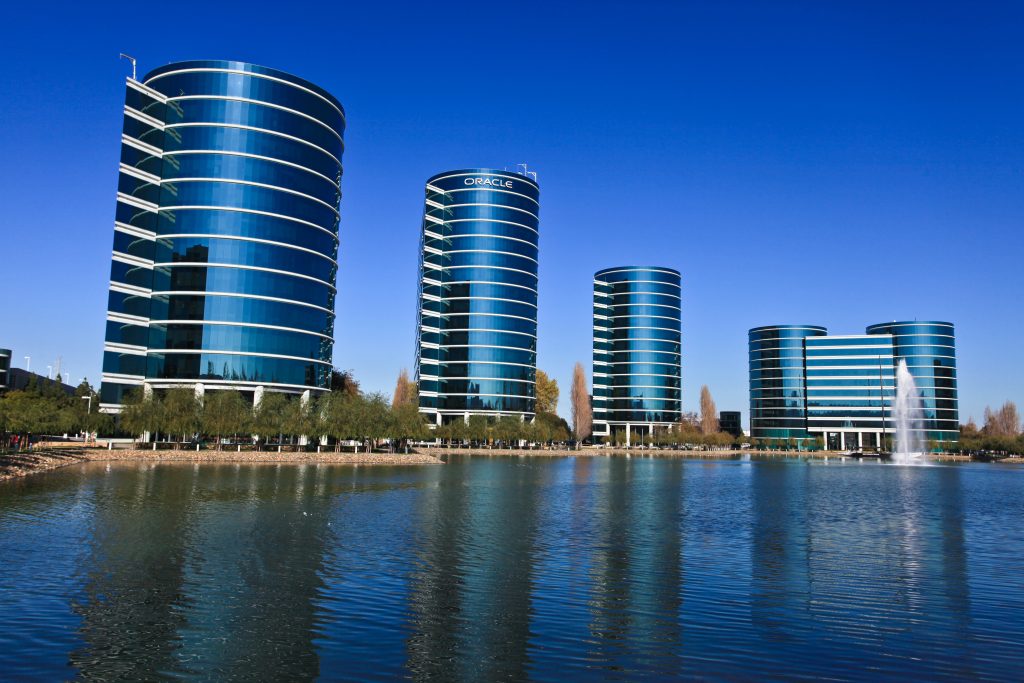Origins: A CIA Code Name
In 1977, Larry Ellison, working with Bob Miner and Ed Oates, founded Software Development Laboratories (SDL) with a single ambition: to commercialize the relational database model first proposed by Edgar F. Codd.
Their project drew inspiration from a CIA-funded system codenamed “Oracle.” In 1979, they released Oracle V2, the first commercially available SQL-based relational database. Though primitive, it signaled the beginning of a revolution in enterprise data management. The company’s name—Oracle—would forever carry the echo of that code name.
Making Databases Portable
Through the 1980s, Oracle rewrote its early code in C, enabling the database to run on mainframes, minicomputers, and PCs alike. This portability became Oracle’s edge.
While rivals locked customers into proprietary systems, Oracle positioned itself as the vendor that lowered risk and allowed flexibility. This strategy, combined with SQL standardization, propelled Oracle into the heart of corporate IT.
The Accounting Scandal and Recovery
By 1990, Oracle’s aggressive revenue recognition practices backfired. Contracts were booked as revenue before delivery, forcing a massive earnings restatement.
With new CFO Jeff Henley enforcing strict accounting rules and Ray Lane reshaping sales and services, Oracle weathered the crisis. This period became a textbook example of how tech companies must eventually master the discipline of numbers.
The Era of Mega Acquisitions
In the 2000s, Oracle turned to acquisition as strategy.
- PeopleSoft (2005) – $10.3 billion, after a bitter legal battle.
- Siebel Systems (2006) – CRM market leader.
- BEA Systems (2008) – middleware powerhouse.
- Sun Microsystems (2010) – Java, Solaris, and MySQL all came under Oracle’s roof.
The Sun acquisition, despite lengthy EU scrutiny, gave Oracle control over both software and hardware, fulfilling Ellison’s dream of a “vertical stack”—database, middleware, apps, OS, and hardware.
Entering the Cloud Era
While competitors surged ahead in cloud, Oracle repositioned with its Gen 2 Cloud Infrastructure and Autonomous Database, pushing automation as its differentiator.
It struck unusual alliances—such as Database@Azure with Microsoft, where Oracle databases run inside Azure data centers, operated on Oracle’s infrastructure. And with NVIDIA, Oracle became the first hyperscale cloud to host DGX Cloud, fueling AI workloads.
Shifting Headquarters and Betting on Healthcare
In 2020, Oracle announced the relocation of its headquarters from Silicon Valley to Austin, Texas, emphasizing flexibility in work. By 2024, Ellison declared that Nashville would become Oracle’s future global headquarters, aligning with its expansion into healthcare.
This followed the massive $28.3 billion acquisition of Cerner (now Oracle Health), positioning Oracle as a player in electronic health records (EHR). The goal: modernizing U.S. Department of Defense and VA systems, as well as hospital and insurer data worldwide. Healthcare moves slowly—but once systems are embedded, they stay. Oracle understands this deeply.
Data Sovereignty and Project Texas
In parallel, Oracle became the trusted custodian for TikTok’s U.S. user data through Project Texas, storing and monitoring data on Oracle Cloud to satisfy regulators. This underscored a future where data sovereignty and “national clouds” are as critical as technology itself.
Today’s Oracle: Cloud, Health, and Beyond
As of 2025, Oracle is led by Safra Catz (CEO) and Larry Ellison (Chairman & CTO). Its cloud footprint continues to expand, with deeper ties to Microsoft, NVIDIA, and government agencies.
Oracle’s history is not a smooth hero’s journey but a sequence of bold choices—sometimes controversial, always consequential. From fixing accounting practices to absorbing entire industries, from Silicon Valley glass towers to Nashville’s healthcare hub, Oracle’s story proves that reinvention is survival.
Conclusion: The Grammar of Oracle
Oracle’s narrative began in a lab with a code name. Every turning point—1990’s reckoning, 2000s acquisitions, 2010s vertical stack, 2020s cloud and healthcare—rewrote the next line.
Its core philosophy endures:
Control the essentials. Grow the connections.
No one knows the next chapter, but the grammar of Oracle’s story seems unlikely to change.

